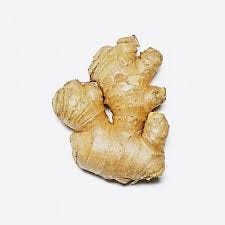Eat like a champ - or a chimp?
A recipe for fresh ginger salad
In poor old Blighty it’s not just Brexit and the resultant diminishing food stocks that are forcing people to examine what they might be eating in the very near future. Global warming (which refers to surface temperature increases) and climate change (which includes global warming plus everything else that increasing greenhouse gas amounts will affect) will alter the whole world’s access to food and water. Anyone have any Instagramable recipes for ways with grass?
It’s a question that has been already been examined. About a decade ago, the BBC sent 9 volunteers to spend 12 days living under canvas on a carefully considered diet based on what our closest ancestors ate. Accordingly, the TV company pitched a covered enclosure next to the Ape House at Paington Zoo in Devon, perhaps because apes can have more telegenic appeal than humans when eating.
The volunteers were filmed eating up to 2,300 calories of fruit, vegetables, nuts and honey a day.
Completely cut out were the main culprits of contemporary diets - processed foods, sugar, and saturated fats. Instead, to gauge the effect on their cholesterol and blood-pressure levels, volunteers aged 36 to 49 ate up to a whopping 5 kilos a day of uncooked fruit and vegetables. Bananas! This is a very large quantity indeed of any kind of food (and possibly why they were assigned a habitat with open sides). But nearly half Britain's 117,000 annual deaths from coronary heart disease are linked to high cholesterol.
It sounds like a reversal of Robert B. Sherman's ‘The Jungle Book’ lyrics: "Oo bee doo. You'll see it's true/An ape like me/Can learn to be human too." But this project was serious - an experiment to demonstrate how much our modern food habits cause health problems. A prescient programme.
Not surprisingly, instead of going hungry, some of the volunteers were unable to finish their daily rations. The diet was devised by a King's College Hospital nutritionist and registered dietician who studied the plant-based diet of primates and which encompassed the foods our bodies have evolved to eat over thousands of years. A three-day rotating menu was devised of fresh produce safe to eat raw which met adult human daily nutritional requirements and provided men and women with their recommended number of calories.
Also part of the regime were nuts and honey, as was water. To embrace the ancestral hunter-gatherer lifestyle, in the second week standard portions of oily fish were introduced.
In the early stages, withdrawal from caffeine and certain favourite foods (and drinks) caused some distress. But very quickly, the volunteers' energy levels rose.
Jon, a 36-year-old driving instructor, had never ever eaten vegetables. At almost 102 kilos/225 pounds in weight, his typical daily diet began with four slices of toast for breakfast, followed by a mid-morning bacon-sausage-and-egg sandwich, then a late afternoon a portion of fish-and-chips and finally a Chinese take-out before bed. His wife signed him up for the experiment.
Over the 12-day diet, he lost 5.6 kilos/12¼ pounds, his blood pressure dropped, and his cholesterol fell by 20 percent.
What had helped lower the cholesterol of every single volunteer was the increased intake of soluble fibre which binds cholesterol to the gut and forces its expulsion and of plant sterols. Each volunteer lost an average of 4.4 kilos/9¾lbs. Salt intake was reduced from the group average of 12 grams a day to 1 gram. (6 grams is the guideline maximum.) The group's saturated-fat intake was reduced from 13 percent to 5 percent of calories. The group's average blood pressure fell from the almost hypertensive level of 140/83 to 122/76.
Not surprisingly, once the experiment ended, some of the volunteers gained some of their weight back. But they each reported they had developed the habit of only eating when they were hungry, and had understood the relationship between eating well and good health. That Christmas, said Jon, he’d had vegetables with his Christmas dinner for the very first time in his life.
Socially, of course, all that fibre and the gases it creates can be tricky to deal with. And we're not likely to move into the zoo for our health. But it’s now widely understood that we need - for the sake of the planet as well as our own - to cut radically back on our consumption of meat and increase our eating of pulses and vegetables.
The zing of this fresh ginger, carrot and cabbage salad may not appeal to chimps. But whether you want to improve your cholesterol and blood-pressure levels or not, it is delicious. Ginger is an impressive rhizome. It’s a cultigen, a plant that is the result of artificial selection, deliberately altered by the Austronesian peoples of Southeast Asia as far back as 1500 BC. It was one of the first spices to have been exported along the spice trade to Europe and used by the Ancient Greeks and Romans. These days, India provides 32 percent of the world’s annual 2.8 million tonnes. Always have a chunk of ginger in your fridge. Slices of it steeped in boiling water make a wonderful hot drink.
55g/2oz peeled and grated fresh ginger
95ml/5 tablespoons fresh lime juice
95g/3 oz sugar
soy sauce to taste
1 small head thinly sliced white cabbage
1 large peeled and grated carrot
a very generous quantity of jarred pickled sliced ginger root, drained
handful roasted peanuts, roughly crushed (optional)
In a bowl, whisk together the first 4 ingredients.
In a second bowl, toss together the cabbage, carrot and jarred ginger, then pour over the sauce and toss together well to coat.
Let the flavours to develop for 30 minutes, then scatter over the peanuts and serve - with grilled prawns or skewers of chicken satay, if you want to turn it into a main course.
Hint: The easiest way to peel fresh ginger is to scrape it with the side of a teaspoon or knife.





Fascinating experiment.
Our carnivorous dog was very sick today- and as happens when she is sick- she went outside to eat grass. I was wondering if humans also could benefit from eating grass. After all a lot of grains are grass I think.